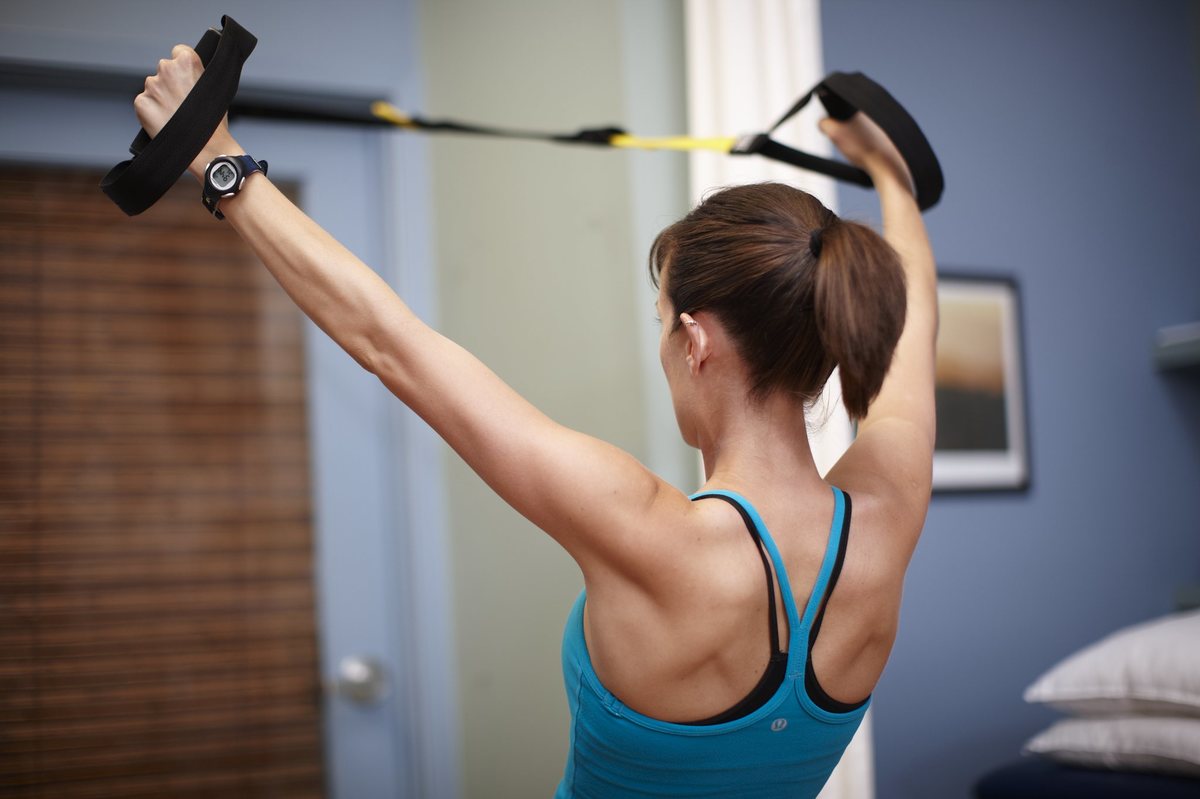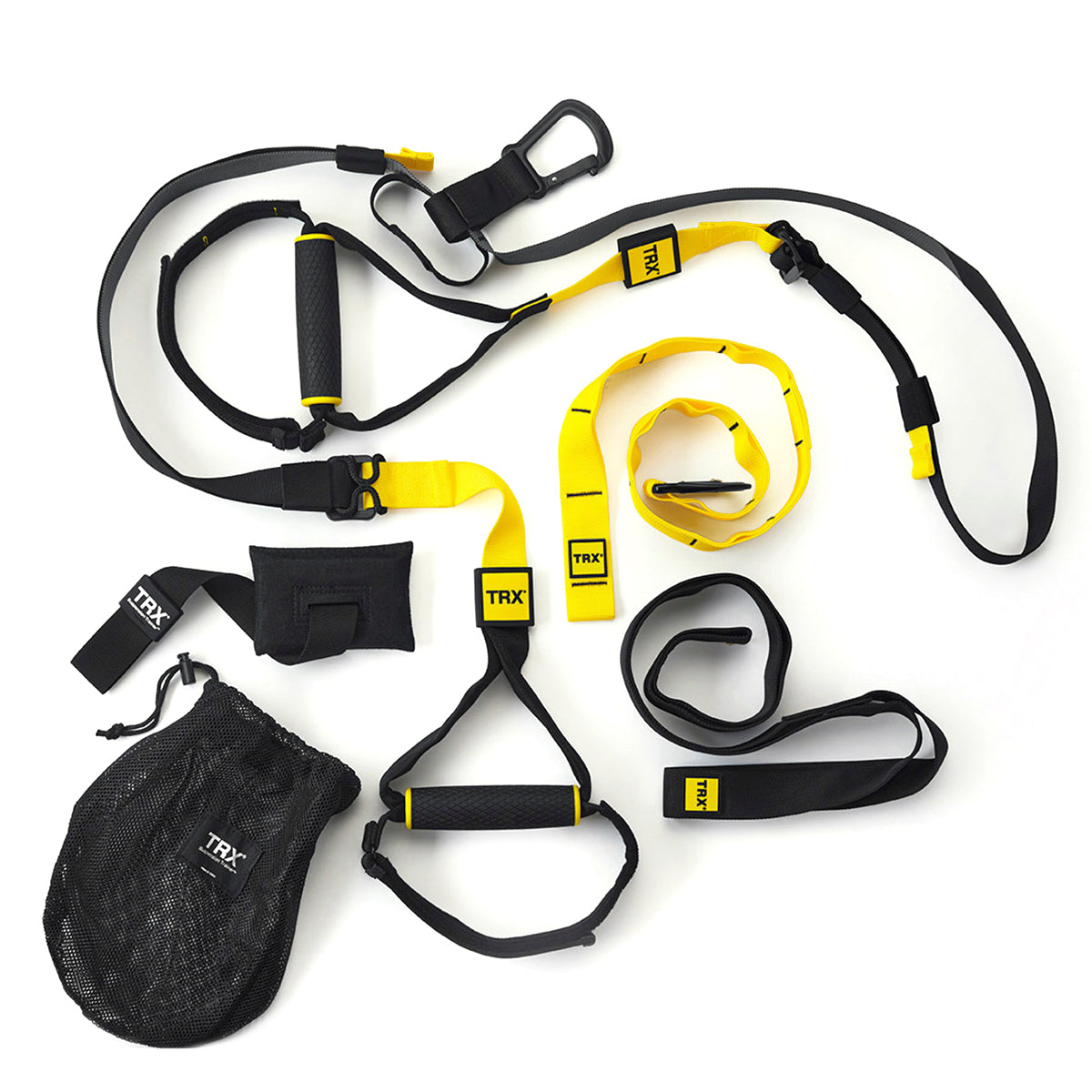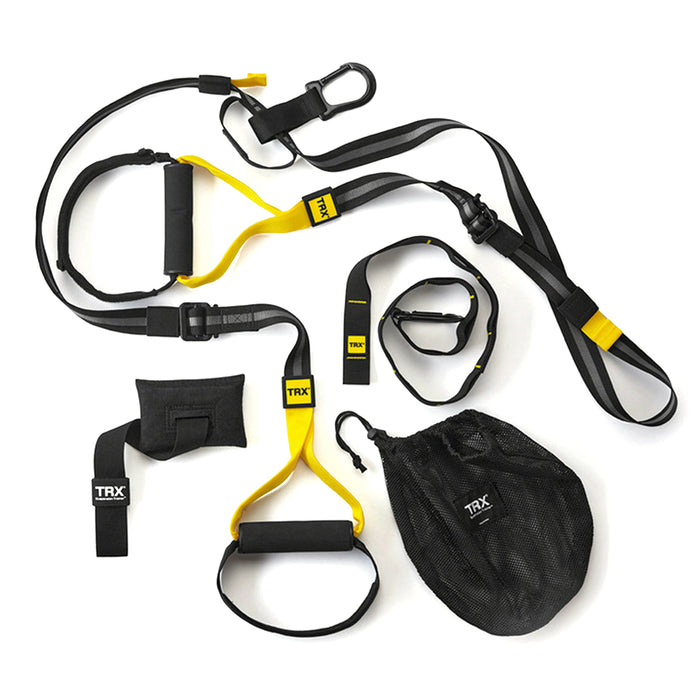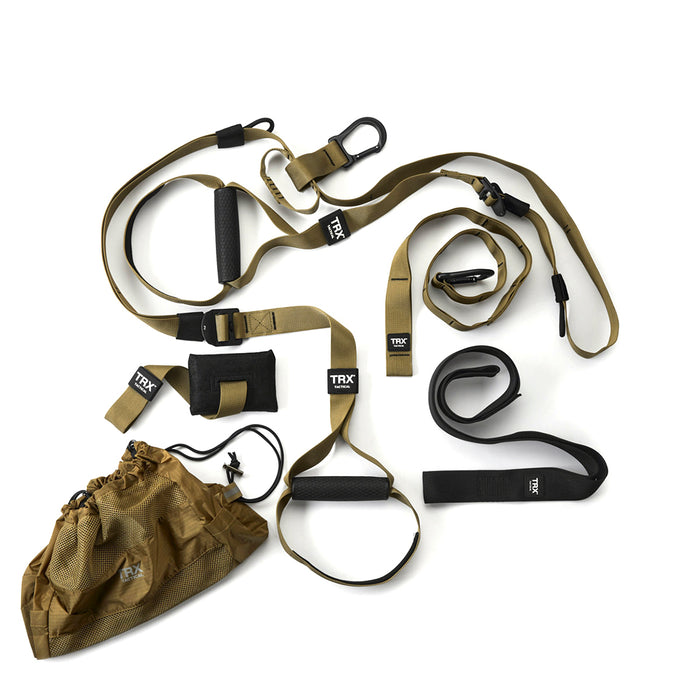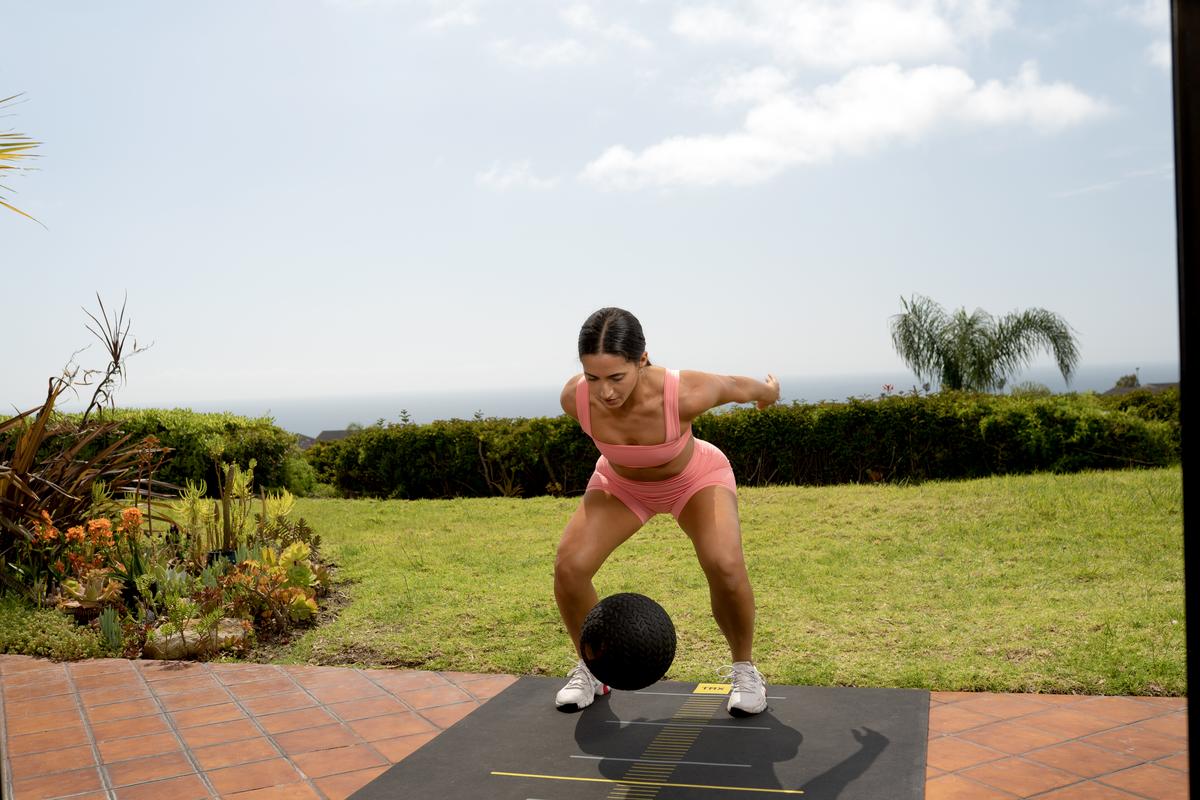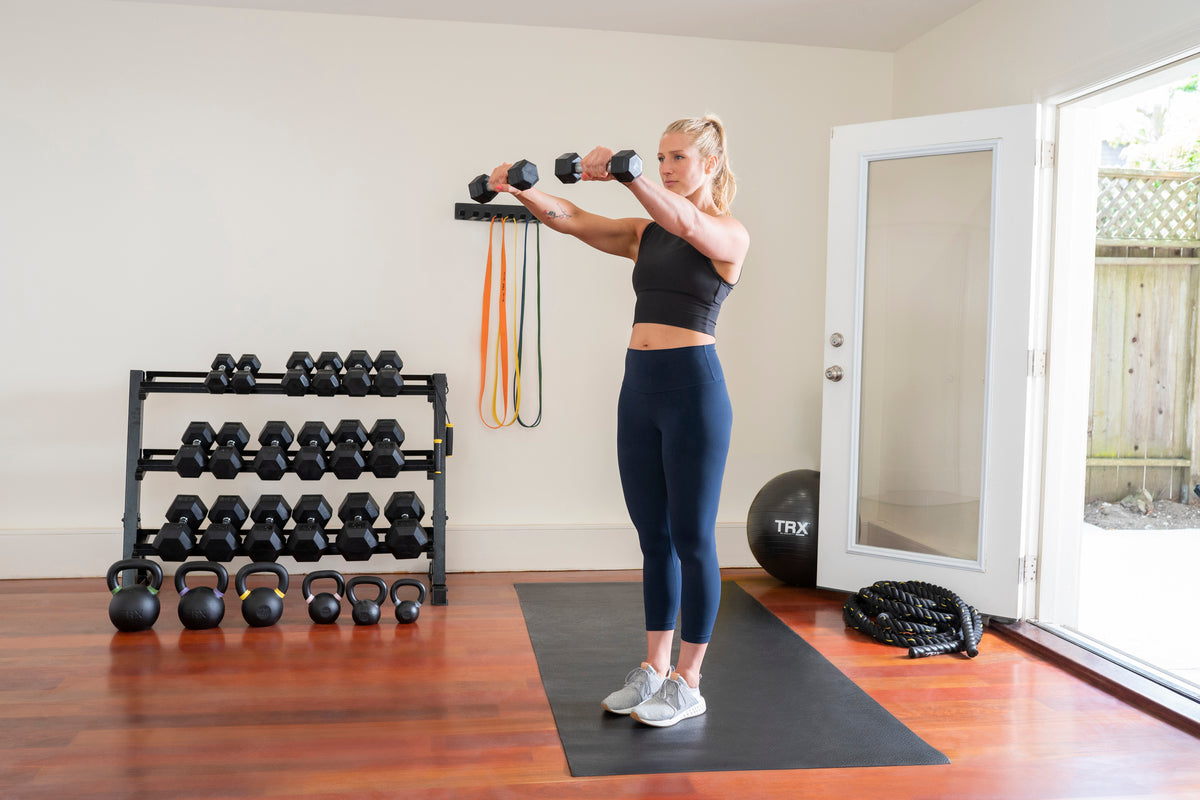A well-developed back not only contributes to an impressive aesthetic but also plays a vital role in overall strength and posture. Among the myriad of muscle groups that comprise the back, achieving width is often a sought-after goal for many fitness enthusiasts. A wider back not only enhances the V-tapered look, giving the illusion of a smaller waist but also contributes to improved upper body stability and functionality.
In this article, we’ll deep dive into exercises specifically designed to develop the strength of your back to create width, unveiling a comprehensive array of techniques and movements that will help you sculpt a powerful and impressive posterior chain. Whether you're a seasoned gym-goer or a newcomer to the world of fitness, these exercises will guide you on your journey toward achieving a back that commands attention and exudes strength. Get ready to unleash the full potential of your back as we explore these targeted exercises and discover the path to a broader, more formidable presence.
Tips for Building a Wider Back
Make Sure to Use Your Lats
Using your lats, or latissimus dorsi muscles, can significantly contribute to building a wider back. The latissimus dorsi is a large muscle group located on each side of the back, extending from the upper arm bone to the lower spine. When properly engaged and trained, these muscles play a vital role in creating width and thickness in the back.
To develop a wider back, it is essential to focus on exercises that target the lats. Pull-up variations, such as wide-grip pull-ups or lat pull-downs, are particularly effective in engaging the lats. These exercises involve pulling your body weight or a weighted resistance down towards your upper body, activating the lats, and stimulating muscle growth.
By incorporating lat-focused exercises into your training routine, you can directly target and stress the lats, encouraging muscle hypertrophy and overall development. As the lats grow and strengthen, they contribute to a broader appearance in the back, giving the illusion of a wider frame. Consistent and progressive training, combined with proper form and technique, will help you build a wider back by emphasizing the development of the latissimus dorsi muscles.
Make Sure to Stretch Beforehand
Stretching before exercise can help activate all back muscles involved by preparing them for movement and increasing their flexibility. When we stretch, we gently elongate the muscles and surrounding connective tissues, which improves their elasticity and range of motion. This process promotes better muscle activation during exercise.
By stretching the back muscles before a workout, we increase blood flow to the area, delivering more oxygen. This helps warm up the muscles and primes them for action. Additionally, stretching can help relieve tension and tightness in the back, allowing for a greater range of motion during exercise.
Stretching also stimulates the proprioceptors in the muscles, which are responsible for sending signals to the brain about the body's position and movement. This activation helps improve muscle coordination and enhances the recruitment of all back muscles involved in the exercise.
It’s important to note that dynamic stretching is generally recommended over static stretching. Dynamic stretching involves moving your joints and muscles through a full range of motion, mimicking the movements you'll be doing during your workout. This type of stretching helps to increase blood flow, raise your body temperature, improve mobility, and activate the muscles you'll be using. It sets a solid foundation for an effective and safe workout, reducing the risk of injury and optimizing the performance of the back muscles. On the other hand, static stretching involves holding a stretch for an extended period without movement. While static stretching can be beneficial for improving flexibility, it's not ideal for warming up before a strength workout. Research suggests that static stretching can temporarily reduce muscle strength and power if performed immediately before a workout, which is counterproductive for strength training.
Use a Wider Grip
Using a wider grip during exercises like pull-ups, lat pulldowns, or rows can be an effective way to activate your back muscles. The wider grip increases the lever length, which creates a longer movement between the resistance and the axis of rotation at the shoulder joint. This places a greater emphasis on the muscles responsible for shoulder extension and scapular retraction, primarily the lats, rhomboids, and trapezius.
Additionally, a wider grip allows for a greater range of motion and stretches the target muscles to a greater extent, leading to increased muscle activation.
It's important to note that while a wider grip can enhance back muscle activation, it may also increase the involvement of the biceps and forearm muscles. Therefore, it's crucial to maintain proper form and focus on engaging the back muscles throughout the exercise to ensure optimal results.
The Best Exercises for a Wide Back
Looking to build that coveted V-taper and impressive back width? Whether you're a seasoned lifter or just starting your fitness journey, mastering these key back exercises is crucial for developing an impressive physique. (Want to discover which back-widening exercises would work best for your body type and fitness level? Our quick assessment quiz can create a personalized training plan just for you!)
TAKE OUR TRAINING QUIZ
8. Wide Grip Lat Pulldowns
This compound movement primarily targets the lats but also engages other muscle groups such as the biceps, rear deltoids, and trapezius. Incorporating wide-grip lat pulldowns into your workout routine can improve your posture, increase upper body strength, and enhance overall muscle development.
- Set up the machine by adjusting the thigh pad and seat height so that your thighs are secured and your feet are flat on the floor.
- Grab the wide bar with an overhand grip, with your hands positioned slightly wider than shoulder-width apart.
- Sit with your back straight, chest lifted, and shoulders down. Maintain a slight backward lean while keeping your feet grounded.
- Initiate the movement by squeezing your shoulder blades together and depressing your shoulders. This engages the lats and prepares them for the exercise.
- Pull the bar down towards your upper chest, keeping your elbows pointed out to the sides. Focus on using your back muscles rather than relying solely on your arms. Aim to bring the bar as close to your chest as possible without touching it.
- Once the bar reaches the lowest position, pause, and squeeze your back muscles to maximize the contraction.
- With control, return to the start position, and slowly allow the bar to rise back up, extending your arms fully but avoiding complete relaxation of the shoulder muscles.
- Repeat for the desired number of reps
7. Reverse Grip Rows
The reverse grip row exercise, also known as the supine grip row, is a variation of the standard grip row where you grip the barbell or handle with an underhand grip instead of an overhand grip. While both exercises primarily target the muscles of the back, there are some differences, namely the variation in muscle recruitment. The reverse grip row places more emphasis on the biceps and also may shift the emphasis from the larger muscles of the back, such as the lats, to smaller muscles like the rhomboids and lower traps.
- Start by standing with your feet shoulder-width apart and knees slightly bent. Hold a barbell or dumbbell with an underhand grip, with your palms facing up.
- Hinge at the hips, keeping your back straight and core engaged. Allow your arms to hang down fully extended, perpendicular to the floor.
- Pull the weight towards your lower chest, focusing on squeezing your shoulder blades together. Keep your elbows close to your body throughout the movement.
- Pause for a moment at the top of the movement, then slowly lower the weight back down to the starting position, fully extending your arms.
- Repeat for the desired number of repetitions, maintaining proper form and control throughout the exercise.
For variation, you can also perform reverse grip rows using a cable machine or resistance bands, attaching the handle or band to a low anchor point.
6. Dumbbell Pullovers
This versatile movement primarily engages the muscles of the chest, back, and triceps, while also providing benefits for core stability and shoulder mobility. Dumbbell pullovers involve a horizontal pulling motion, which effectively targets the lats. These muscles play a significant role in creating the appearance of a wider back when properly developed. During the exercise, the arms move overhead, which means multiple muscle groups working together, including the lats, chest, triceps, and serratus anterior. The synergistic engagement of these muscles can contribute to overall upper body strength and development, resulting in a more defined and wider back. Dumbbell pullovers require stabilization of the shoulder joints and engagement of the upper back muscles. This can help improve shoulder stability and promote better posture, which in turn can make your back appear wider.
- Hold a single dumbbell with both hands with your palms should be pressed against the underside of the top weight plate, forming a triangle shape with your thumbs and index fingers.
- Lie down on a flat bench with your head supported and your feet planted firmly on the ground.
- Extend your arms overhead and keep a slight bend in your elbows. Maintain a firm grip on the dumbbell throughout the exercise. Brace your core muscles to stabilize your torso and maintain a neutral spine position.
- With control, slowly lower the dumbbell behind your head while maintaining a slight bend in your elbows. Keep your arms straight and avoid letting the weight drift too far back, as this may strain your shoulder joints.
- With a smooth and controlled motion, raise the dumbbell back to the initial position, moving through the same path. Focus on using your chest and back muscles to pull the weight back up, rather than relying solely on your arms.
- Repeat for the desired number of repeats
5. Seated Resistance Band Row
The Seated Resistance Band Row is an excellent exercise that offers a range of benefits for individuals of all fitness levels. This seated variation of the classic rowing exercise engages multiple muscle groups, including the back, shoulders, and arms, while providing a low-impact workout that can be performed almost anywhere. Incorporating the Seated Resistance Band Row into your fitness routine can improve posture, strengthen your upper body, and enhance overall muscular endurance.
- Secure a resistance band to a sturdy anchor point at waist height. Sit on the floor or a bench with your legs extended in front of you, and loop the band around your feet.
- Grab the resistance band handles with an overhand grip, keeping your arms fully extended and shoulders relaxed.
- Begin the exercise by retracting your shoulder blades and pulling the resistance band towards your torso, aiming to bring your elbows back as far as possible.
- Squeeze your shoulder blades together at your end range of the movement, and then slowly release back to the starting position, maintaining control and tension in the band throughout.
- Repeat for the desired number of reps
4. Long Angle Dumbbell Row
The Long Angle Dumbbell Row is a highly effective exercise for building a stronger and wider back. By targeting the muscles of the upper back, such as the rhomboids, trapezius, and rear deltoids, it helps to develop thickness and width in this area. The exercise allows for a greater range of motion compared to other rowing exercises, facilitating a deeper contraction of the targeted muscles. This leads to enhanced muscle fiber recruitment and growth, ultimately resulting in a more substantial and broader back appearance. Additionally, the unilateral nature of the movement helps address any muscle imbalances that may exist, promoting symmetrical development and overall back strength.
- Begin by placing a dumbbell on each side of a flat bench and positioning yourself on the bench with one knee and hand resting on it while keeping your back straight and parallel to the ground.
- With the opposite foot planted firmly on the ground, grab the dumbbell on the same side with a neutral grip, ensuring your palm is facing your body.
- Keeping your core engaged and back flat, pull the dumbbell upward in a rowing motion until it reaches your hip while focusing on squeezing your shoulder blades together.
- Slowly lower the dumbbell back down to the starting position in a controlled manner, allowing your arm to fully extend without rounding your back.
- Repeat the movement for the desired number of reps and then switch sides to work the other arm.
3. Standing Cable Rope Pullover
Unlike other back exercises, the cable rope pullover allows for a greater range of motion, particularly during the eccentric (lengthening) phase. This extended range of motion helps to fully stretch and activate the lats, resulting in more muscle fiber recruitment and improved development. The cable machine provides continuous tension throughout the entire exercise movement, ensuring that the muscles are constantly engaged. This constant resistance places a significant demand on the back muscles, leading to greater strength gains and hypertrophy (muscle growth).
- Position the cable machine at a height slightly above your head. Attach a rope to the cable, ensuring it's securely fastened.
- Stand facing the cable machine with your feet shoulder-width apart. Maintain a slight bend in your knees and engage your core for stability throughout the exercise.
- Grab the rope with an overhand grip, ensuring your hands are shoulder-width apart. Your palms should be facing downwards.
- Keep your arms straight and maintain a slight bend in your elbows, exhale, and extend your arms forward, parallel to the ground. This is your starting position.
- Initiate the movement by retracting your shoulder blades and pulling the rope towards your body. Focus on using your back muscles rather than relying solely on your arms. Keep your arms parallel to the ground and your elbows slightly bent. Squeeze your shoulder blades together and feel the contraction in your upper back muscles.
- Slowly extend your arms forward, returning to the starting position. Avoid letting the weight stack slam down and maintain control throughout the exercise.
- 8. Repeat for desired reps
2. Pull-ups (Wide Grip and Close Grip)
Pull-ups, both wide grip and close grip variations, are highly effective exercises for building a stronger and wider back. This is an advanced and challenging exercise that can be modified if you're a beginner. Start with assisted pull-ups using a resistance band or an assisted pull-up machine. Wide grip pull-ups primarily target the lats which are the largest muscles in the back responsible for creating width and thickness. By performing wide-grip pull-ups, you engage the lats to a greater extent, promoting their development and contributing to a broader back appearance. Close grip pull-ups, on the other hand, emphasize the rhomboids and middle trapezius muscles, which are essential for overall back thickness and strength. Incorporating both wide-grip and close-grip pull-ups into your workout routine helps you achieve a well-rounded back development, resulting in enhanced strength, improved posture, and a wider back aesthetic.
Wide Grip Pull-ups:
- Find a pull-up bar and send your hands slightly wider than shoulder-width apart.
- Hang from the bar with your palms facing away from you and your arms fully extended.
- Engage your core and squeeze your shoulder blades together as you pull your body up towards the bar.
- Aim to bring your chin over the bar and pause briefly at the top.
- Slowly lower yourself back down to the starting position with control.
- Repeat for the desired number of repetitions.
Close Grip Pull-ups:
- Locate a pull-up bar and send your hands slightly narrower than shoulder-width apart.
- Hang from the bar with your palms facing towards you and your arms fully extended.
- Engage your core muscles and focus on pulling your elbows down and back as you lift your body towards the bar.
- Aim to bring your chin over the bar and hold the position briefly.
- Lower yourself back down in a controlled manner, maintaining tension in your muscles.
- Repeat for the desired number of reps.
To intensify the exercise, you can add weight by using a weight belt or weighted vest
1. Lateral Raises
While not specifically a back exercise, lateral raises help develop the shoulder muscles, which can contribute to the overall appearance of a wider back. The exercise involves lifting weights or resistance out to the sides, engaging the upper back, and promoting proper posture. This not only enhances overall back strength but also improves shoulder stability which will help to reduce your risk of injury. Lateral raises also aid in developing the supporting muscles of the back, including the traps and rhomboids, leading to a more sculpted and powerful back appearance.
- Start by standing with your feet shoulder-width apart, holding a dumbbell in each hand. Keep your arms extended down by your sides, palms facing inward.
- Engage your core and maintain a slight bend in your elbows throughout the exercise.
- Keeping your back straight and without swinging, lift both arms simultaneously to the sides until they reach shoulder level.
- Pause for a moment at the top, palms facing the floor, and squeeze your shoulder muscles.
- Slowly lower the dumbbells back to the starting position and repeat for the desired number of reps
Bonus TRX Exercise 1: TRX Y Fly
If you have a TRX suspension trainer, try doing the TRX Y Fly. What sets this exercise apart from the regular Y Fly is the full-body workout you get from leveraging your bodyweight against gravity. Try it today.
This exercise primarily targets the muscles in the upper back, including the rhomboids, rear deltoids, and trapezius, which are essential for posture and upper body strength. The exercise also enhances scapular retraction, leading to better posture and reduced risk of shoulder injuries. Additionally, the TRX Y fly activates stabilizing muscles throughout the core and shoulders, contributing to overall functional strength and stability. Incorporating this exercise into your routine can result in a stronger, wider back, enhanced athletic performance, and a more aesthetically pleasing physique.
- Hold the rubber handles, and lean back in the straps with straight arms and palms facing down.
- Keep feet shoulder width apart and maintain a strict plank position. Pull your arms up and out so your body forms a Y shape.
- Maintaining straight arms slowly and with control lower yourself to the start position
- Walk towards the anchor point to add resistance to the exercise, if you struggle to perform a rep without bending the elbows, take a step back from the anchor point to make the exercise lighter.
- Focus on your shoulders (specifically the rear deltoid), lifting your whole body up and controlling your lowering phase. Your wrists and elbows should never bend.
- Keep your hips still and limit momentum from the body to really focus on strengthening your shoulders.
- Repeat for the desired number of reps
Bonus TRX Exercise 2: TRX Row
The TRX low-row exercise is highly effective for building a stronger and wider back due to its unique benefits. By utilizing suspension straps, it engages the muscles of the upper back, including the latissimus dorsi, rhomboids, and rear deltoids. This exercise emphasizes scapular retraction and shoulder extension, promoting improved posture and stability while targeting multiple muscle groups simultaneously. The TRX low row also activates the core and grip strength, leading to more balanced and functional back development, enhanced pulling power, and increased upper body strength, ultimately resulting in a stronger and wider back.
- Facing your anchor point, hold the rubber handles with your palms towards each other.
- Lean back, and keep the weight in your heels with your tailbone tucked and core engaged.
- Adjust the resistance of your row easily; walk forward to make your rows heavier and backward to make them lighter.
- Pull your chest through your hands and squeeze your shoulder blades together, keep your neck long and shoulders low.
- Lower with control to return to the starting position.
- Repeat for the desired number of reps
Sample Back Workout
Now that we've delved into various back exercises and explored their benefits, it's time to put our knowledge into practice. In this final section, we'll shift our focus from theory to action as we dive into the practical aspect of building a wider, stronger back. This back workout is tailored to help you achieve just that. With a focus on strength building, you'll engage in targeted exercises that will sculpt and strengthen your back muscles, helping you develop a broader, more impressive physique. It's time to translate knowledge into action and transform your aspirations into a reality. Let's get started building the wide, strong back you've always wanted.
TRX Row - Activation set
- Reps: 10-12
- Rest: 60 seconds
- Sets: 3
Pull-ups
- Reps: 6-8
- Rest: 2 minutes
- Sets: 3-4
Wide Grip Lat Pulldowns
- Reps: 8-10
- Rest: 60 seconds
- Sets: 3-4
Reverse Grip Rows (Barbell or Cable)
- Reps: 10-12
- Rest: 60 seconds
- Sets: 4
Long Angle Dumbbell row
- Reps: 10-12
- Rest: 60 seconds
- Sets: 4
Seated Resistance Band Row
- Reps: 12-15
- Rest: 45 seconds
- Sets: 3
Dumbbell Pullovers
- Reps: 10-12
- Rest: 45 seconds
- Sets: 3
Standing Cable Rope Pullover
- Reps: 12-15
- Rest: 45 seconds
- Sets: 3
Lateral Raises (Dumbbells)
- Reps: 12-15
- Rest: 45 seconds
- Sets: 3
TRX Y Fly
- Reps: 12-15
- Rest: 60 seconds
- Sets: 3
- Adjust the weight/resistance based on your fitness level. Aim for a challenging weight that allows you to complete the designated number of repetitions with proper form. Rest periods can be adjusted based on your individual needs, but stick to the recommended ranges for optimal recovery.
- After completing this intense upper-body workout, it's essential to cool down and stretch your muscles. Spend 5-10 minutes performing static stretches for the major muscle groups worked during the workout.
Try more workouts like the one above in the TRX Training Club app!


